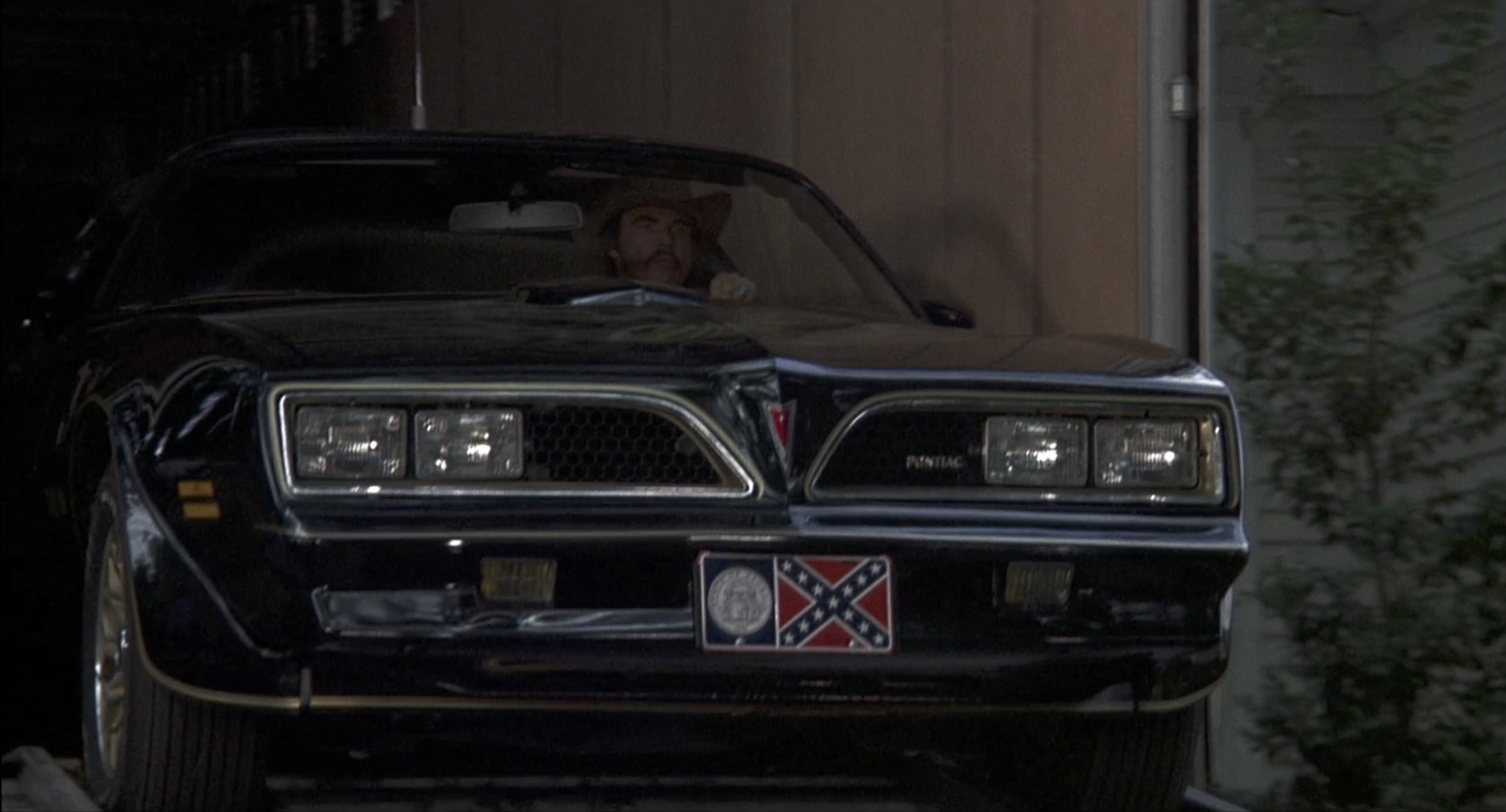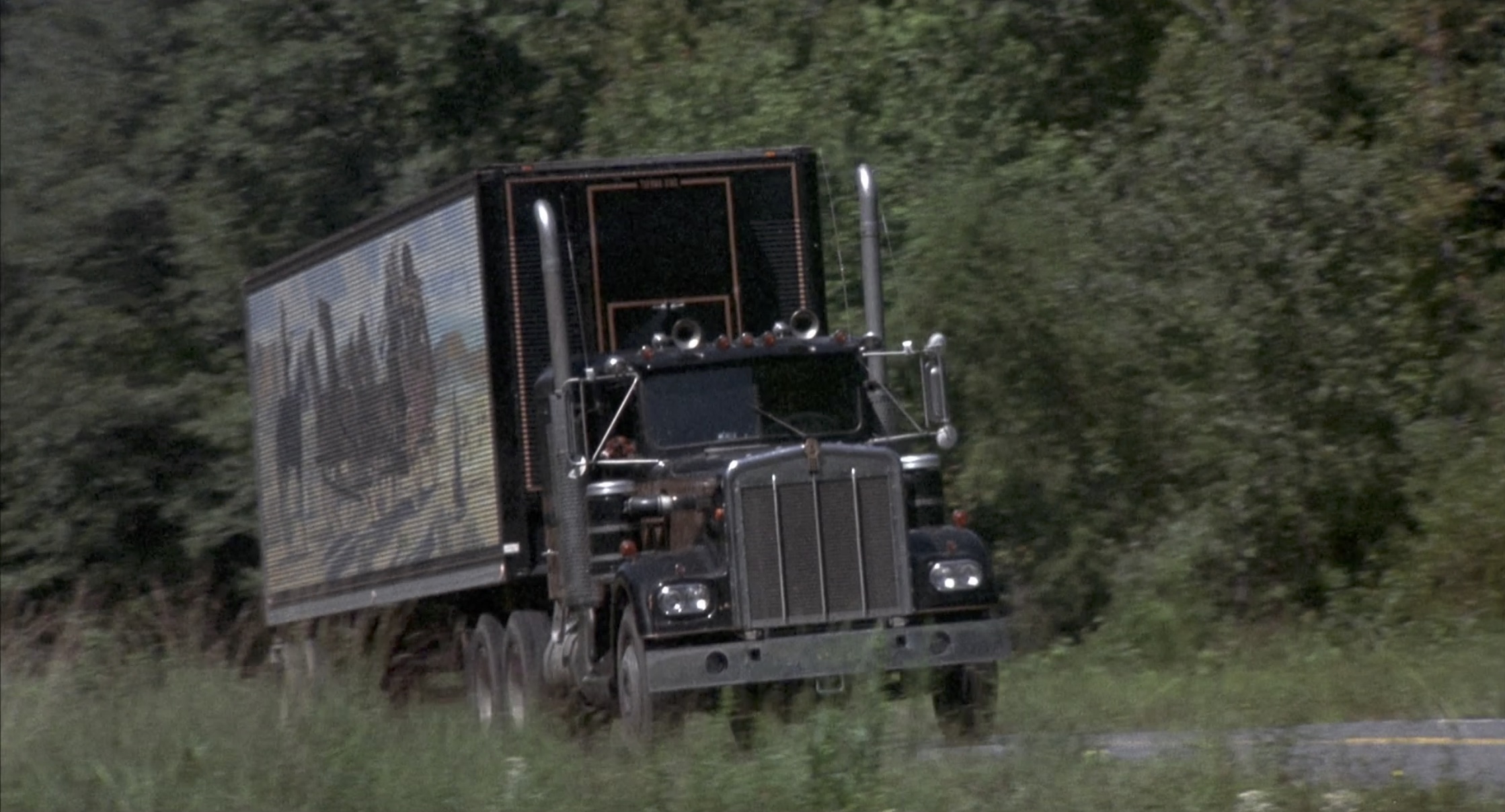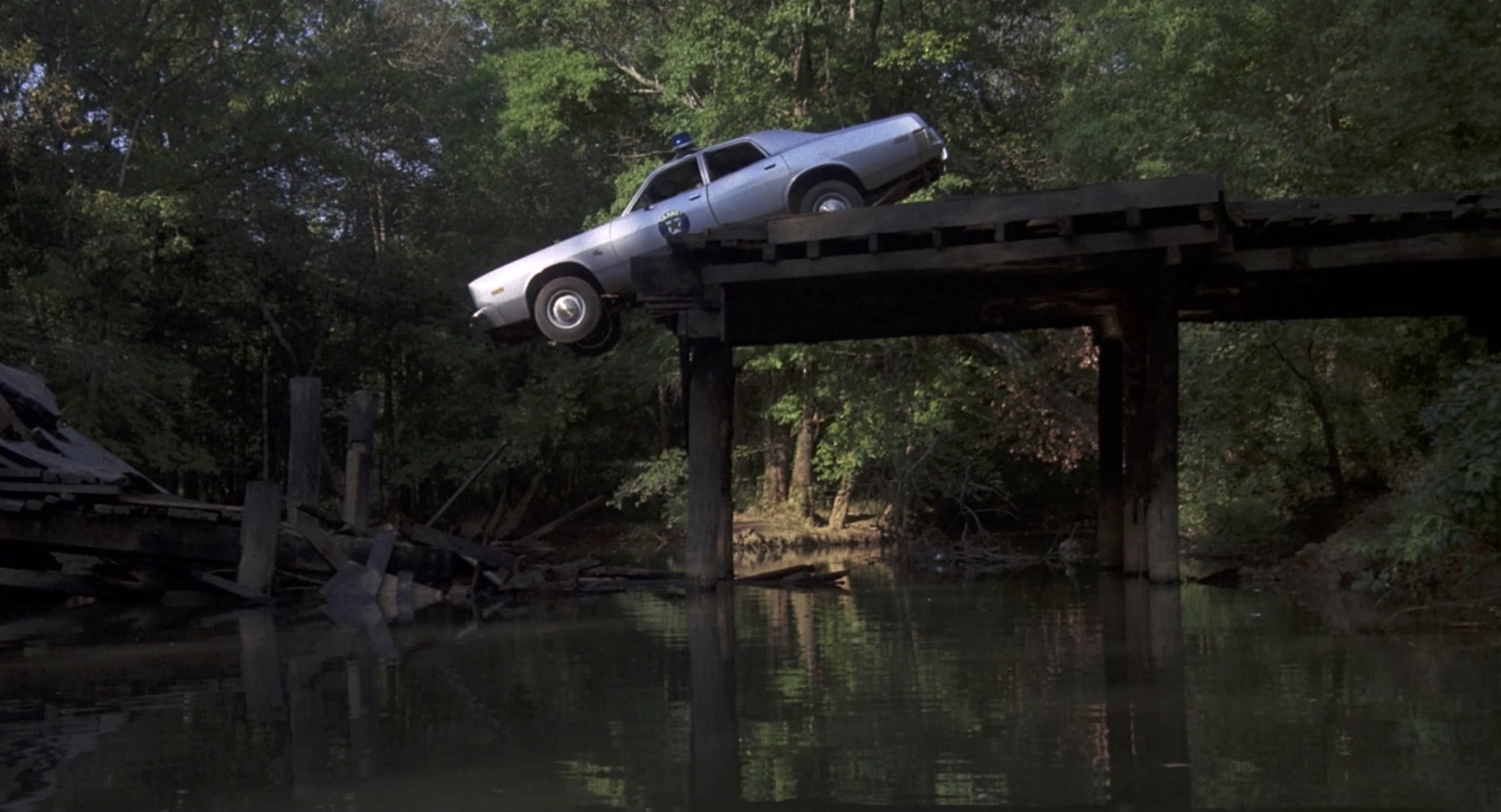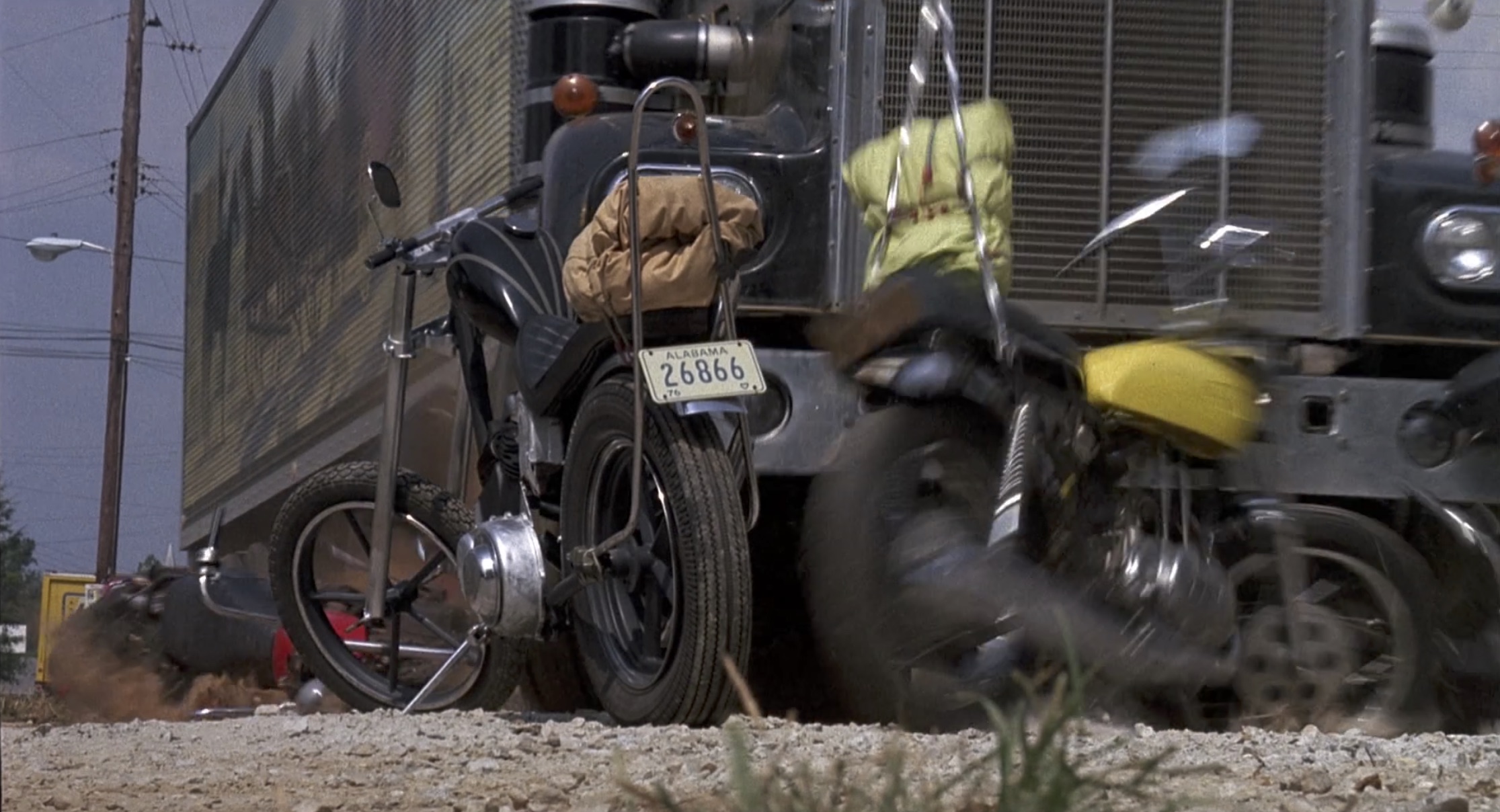A movie for the people, “Smokey and the Bandit” is more than a Trans Am
In the 1970s, car movies became the new westerns, and drivers and truckers were modern-day cowboys. Horses, gunfights, and wilderness gave way to cars, chases, and the open road. It was a shift evidenced by Smokey and the Bandit, a film about fast cars (and Coors beer).
It all started when Hal Needham was down in Georgia making Gator, the sequel to White Lightning. The driver captain had bootlegged Coors from Los Angeles and gave some to Needham, but the beer kept disappearing from his fridge. He realized that the hotel maid had been taking them, because you couldn’t buy Coors east of the Mississippi. Needham reckoned that bootlegging Coors beer was a pretty good idea for a script, and Smokey and the Bandit was born.
Smokey and the Bandit was stuntman Hal Needham’s directorial debut, and, in a way, a gift from his best friend and then-roommate Burt Reynolds. Needham explained, “I took the script home and gave it to Burt. Burt looked at it and he said, ‘Hal,’ he said, ‘that’s the worst dialogue I’ve ever read in my life.’ But he said the overall concept was pretty good. He said, ‘If you can take my name power and go get the money and somebody that’s fool enough to direct it, you can direct it.’”
Universal did not believe Needham could direct, and there’s a good chance they never would have made Smokey and the Bandit without Burt Reynolds. Even with Reynolds’s involvement, Universal had no faith in Needham or the film. Producer Hilton Green told Needham, “I hope you got your roller-skates on, ‘cause you can’t do it.”



Needham’s son remembered his father once saying, “If I didn’t do Smokey and the Bandit, I’d probably be picking up cans on the side of the road for a living.” Needham came from sharecroppers, his work history included tree trimming and a military background as a paratrooper. He had no film experience when he decided he was “going west till [his] hat floats,” where he became Hollywood’s best stuntman, and then a director in his own right.
The premise of Needham’s film was simple: father and son Big Enos Burdette (Pat McCormick) and Little Enos Burdette (Paul Williams) make a bet with Bo “Bandit” Darville: if Bandit can successfully bootleg 400 cases of Coors from Texarkana to Atlanta in 28 hours to the Burdettes’s party, they will pay him $80,000. Country star Jerry Reed played Cledus “Snowman” Snow, a big rig driver, and Bandit was his blocker in his iconic Trans Am, an onscreen relationship that reflected the real-life friendship of Needham and Reynolds.
Bandit’s and Snowman’s adversary was Buford T. Justice, played by Jackie Gleason, a sheriff fixated on taking Bandit down because he was a menace on the road, and because he’d picked up Carrie, aka Frog (Sally Field)—Buford’s son’s runaway bride—as his passenger:
“She insulted my town, she insulted my son. She insulted my authority. And that’s nothin’ but pure and simple old-fashioned communism.” Although everyone loved the idea of casting Sally Field, Reynolds took credit, claiming, “I wanted her really bad for Smokey, and they said, ‘Well, she’s not sexy.’ And I said, ‘You don’t get it, talent is sexy.’ And she’s got that.’” Field and Reynolds became a couple during the shoot, and the chemistry is evident. (Their stunt doubles Alan Gibbs and Janet Brady also fell in love on set, and even got married.)




Hal Needham knew the Trans Am was the perfect car for Bandit and asked Pontiac whether they’d give them cars in exchange for product placement. General Motors provided the production two Bonnevilles for Buford T. Justice’s police car and four Trans Ams for Bandit. (They also used three 1974 Kenworth W900 trucks for Snowman’s big rig.) The film’s iconic black 1977 Pontiac Firebird Trans Am with its gold Screaming Chicken was actually a 1976 Trans Am modified to look like the yet-to-be-released 1977 model. They outfitted the car used for the Mulberry Bridge jump with a manual transmission and a powerful Chevy engine. At the end of the shoot, the fourth car wouldn’t even start and they were forced to use one of the totaled Trans Ams, which had to be pushed into the scene.
Tragically, every Trans Am used in filming was destroyed. Burt Reynolds once claimed in an interview that there were actually 12 Trans Ams featured in Smokey and the Bandit—and he wrecked every one. As a feature-length car chase, the car was as much of a star as Burt Reynolds, and the film gave birth to the cult of the Trans Am. After Smokey’s release, Pontiac profits shot way up, and it was a six-month wait to get a Trans Am. Pontiac even agreed to give Reynolds a new car every year—that is, until new leadership at GM let Reynolds know they didn’t care for his movies.
But it’s hard to imagine a more likable film with more likable characters than Smokey and the Bandit. Bandit, Snowman, and Frog are friendly to just about everybody they meet, except for the police and folks who are mean to Snowman’s basset hound Fred. Smokey and the Bandit depicted a welcoming community of truckers: anyone could be a trucker, it didn’t matter what your age, race, or gender was. They are starkly different from the cops, who all seem to hate each other and work against each other; Buford himself is racist and mean as hell, whereas the friendliness and loyalty of truckers is idyllic. There’s a moving display of solidarity when just about every trucker in the county band together to protect Bandit and Snowman from the law, surrounding the Trans Am to protect it from the smokeys on the highway. Bandit tells Frog, “This is not a convoy, this is a dream.”



Bandit was mythic, a folk tale legend, yet he also felt familiar, like someone you knew, like a pal or a brother. Like so many of Burt Reynolds’s characters in the 1970s, Bandit made the south a kinder, freer, friendlier place. He defied authority, racist cops and vicious prison guards. Buford embodied the worst impulses and prejudices of the south, just as Bandit embodied the best of the American dream, the idea that the open road belongs to all people, and that every American has the right to drink Coors beer. The story of Bandit against Buford T. Justice was a classic tale of good against evil. And it gave us some of the most satisfying moments in cinematic history, like the Mulberry Bridge jump, and Sally Field flipping off a motorcycle cop as Burt Reynolds burns rubber.
Needham once boasted he could “make a car talk.” As it turned out, he could also make a damn good movie. Smokey, like its hero Bandit, was an underdog. Everyone expected it to fail. A hatchet man working for the studio even showed up just before they started production to cut a million dollars from the budget. Film critics panned it, but Smokey and the Bandit became the second highest-grossing film of 1977, right behind Star Wars. Reynolds said, “I’m glad it was, because it was a picture that wasn’t made for the critics, it was made for the people.” Fans of the film included David Lean and Orson Welles. It was Alfred Hitchcock’s favorite movie—he loved it so much he watched it weekly, and it was the last movie he watched before he died.

More than anything, Smokey and the Bandit was a movie about fun, about having an adventure with friends old and new just for the hell of it. “It’s an escapist movie, and a movie about escape,” said Paul Williams. It all comes down to an exchange between Bandit and Snowman: Snowman asks why they’re doing it, and Bandit responds, “Well, why not?” Snowman says, “Well they said it couldn’t be done.” And Bandit answers: “Well, that’s the reason, son.”
As for Burt Reynolds, he had no regrets. When asked whether he was still shooting for a Casablanca in his career, Reynolds responded: “Yeah, I’m shooting for a Casablanca. And you know what I’ll do when I get my Casablanca? I’ll go right back and make a Smokey and the Bandit.”








